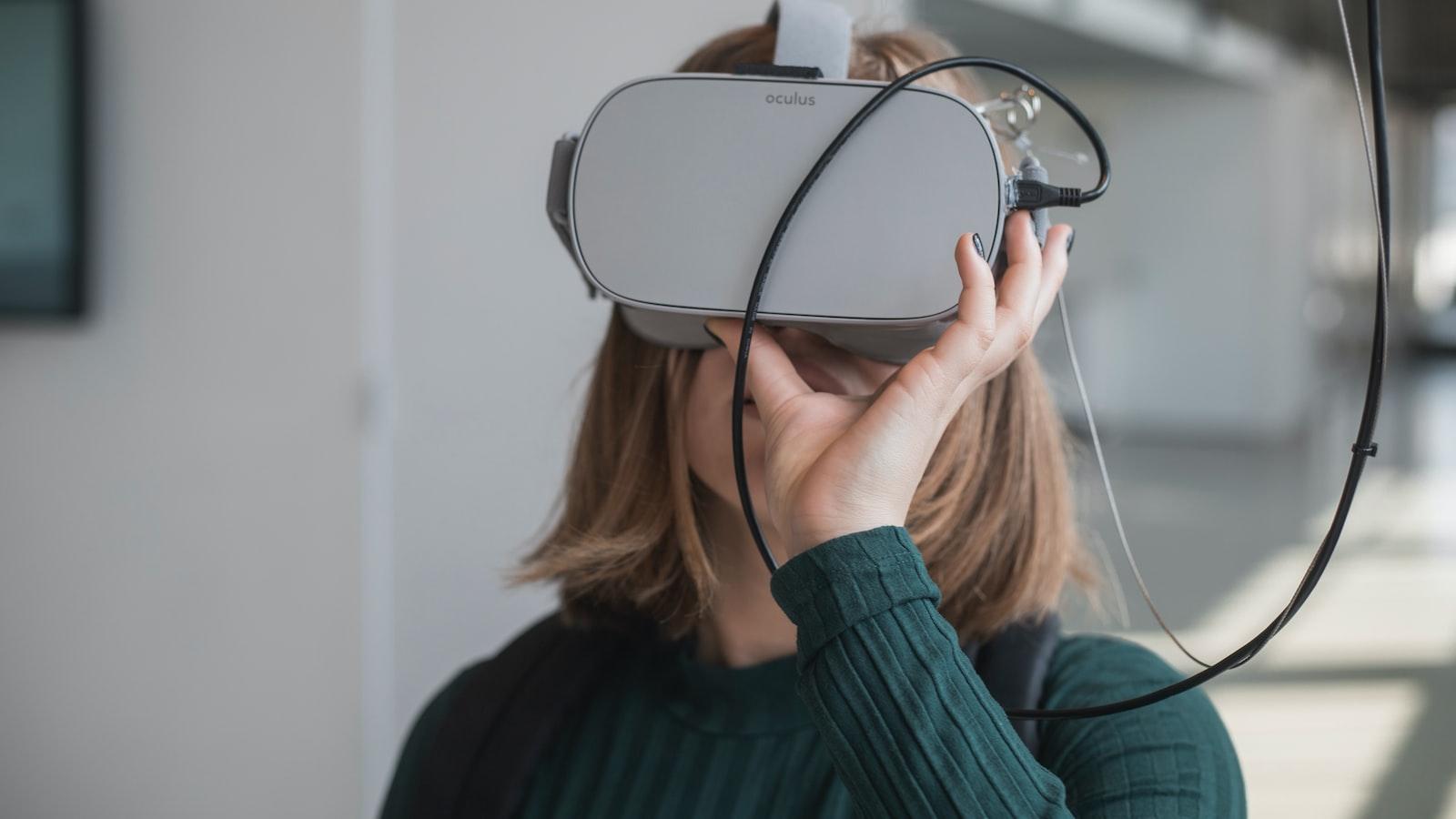Imagine a world where healthcare is not bound by physical barriers, where medical expertise stands ready to embrace those in need regardless of location or circumstance. In this era of rapid technological advancements, digital health innovations have emerged as beacons of hope, illuminating the path towards enhanced healthcare accessibility. From remote consultations and telemedicine to wearable devices and artificial intelligence, these groundbreaking advancements hold the potential to revolutionize the way we heal and care for one another. Join us as we embark on a journey through this landscape of ingenuity, exploring the endless possibilities of digital health and the profound impact it can have on our lives. Whether you’re a patient, a healthcare provider, or simply an enthusiast, prepare to witness the marvels that await us in this extraordinary realm, where humanity’s health knows no bounds. Welcome to the realm of digital health innovations, where accessibility becomes a fundamental right for all.
Digital Health Innovations: Bridging the Healthcare Divide
In today’s rapidly advancing digital age, innovators in the healthcare industry are revolutionizing the way we access and receive medical care. Digital health innovations have emerged as powerful tools bridging the divide that exists in healthcare accessibility. These technological advancements are empowering individuals to take charge of their own well-being and providing healthcare services to individuals who were previously underserved.
One of the key aspects of digital health innovations is the ability to bring healthcare services to remote or underserved areas. Through telemedicine, individuals residing in rural communities can now connect with doctors located miles away, breaking the barriers of distance and increasing accessibility. Additionally, wearable devices with real-time monitoring capabilities enable patients with chronic conditions to manage their health proactively from the comfort of their homes. This remote monitoring offers convenience and peace of mind while reducing unnecessary hospital visits.
Another remarkable aspect of digital health innovations is the vast range of mobile health applications available. From tracking physical activity to managing medication reminders, these apps make healthcare more accessible and convenient than ever before. They empower individuals to actively participate in their well-being by providing personalized health information and resources at their fingertips. These applications also promote preventive care, fostering a healthier lifestyle and reducing healthcare costs in the long run.

Revolutionizing Patient Care through Technological Advancements
In today’s fast-paced world, technology has become an indispensable part of our daily lives, transforming the way we communicate, work, and even seek healthcare. With the advent of digital health innovations, patient care has been revolutionized, unlocking new possibilities and enhancing accessibility to healthcare services.
One of the most prominent advancements in digital health is the development of telemedicine. This breakthrough technology allows patients to receive medical consultations and treatment remotely, eliminating the need for physical visits to clinics or hospitals. Telemedicine leverages video conferencing and real-time communication tools, enabling healthcare providers to diagnose and treat patients from the comfort of their own homes. This not only saves valuable time and resources but also improves access to healthcare for individuals living in rural areas, where medical facilities may be limited.
Another remarkable digital health innovation is the introduction of wearable devices and health apps. These technological marvels have empowered individuals to take control of their own health and well-being. From fitness trackers that monitor heart rate and sleep patterns to apps that provide personalized diet and exercise plans, these devices and applications have revolutionized preventive care. With real-time data tracking and analysis, users can make informed decisions about their health, detect early warning signs, and proactively manage chronic conditions.
The table below showcases some of the transformative digital health innovations and their impact on patient care:
| Digital Health Innovations | Impact on Patient Care |
| ——————————- | ———————————————– |
| Telemedicine | Improved access to healthcare for remote areas |
| Wearable devices and health apps| Empowers individuals to take charge of their health|
In conclusion, digital health innovations have played a pivotal role in enhancing healthcare accessibility. Telemedicine has bridged the gap between patients and healthcare providers, while wearable devices and health apps have empowered individuals to take control of their own health. As technology continues to advance, the possibilities for revolutionizing patient care are endless, promising a brighter and healthier future for all.
Unlocking Potential: Key Strategies for Implementing Digital Health Solutions
In today’s rapidly advancing world, digital health innovations have become integral in enhancing the accessibility of healthcare services. As society continues to embrace technology, it is crucial for healthcare providers to implement key strategies that unlock the full potential of these digital solutions.
One fundamental strategy is to prioritize user-centric design. By understanding the unique needs and challenges faced by patients, healthcare professionals can tailor digital health solutions to provide a seamless experience. This includes intuitive interfaces that are easy to navigate, personalized notifications for medication reminders or treatment plans, and access to comprehensive health records at the touch of a button. Putting the user at the center ensures that these solutions truly enhance healthcare accessibility.
Another important strategy is fostering strong data security and privacy protocols. With the increasing amount of patient data being transmitted and stored digitally, it is imperative to maintain strict measures to safeguard sensitive information. Implementing encryption, two-factor authentication, and regular security audits are just some of the steps that can be taken. By assuring patients that their privacy is protected, healthcare providers can build trust and encourage widespread adoption of digital health solutions.
Advantages of Implementing Key Strategies:
- Improved patient engagement and satisfaction.
- Enhanced communication and coordination between healthcare providers and patients.
- Optimized healthcare outcomes through real-time monitoring and feedback.
- Streamlined healthcare processes, reducing administrative burdens on both patients and providers.
| Description | Impact |
|---|---|
| Telemedicine | Allows remote consultations, expanding healthcare access for patients in remote areas or with limited mobility. |
| Electronic Health Records | Enables seamless sharing of patient information among healthcare providers, ensuring continuity of care. |
| Mobile Health Applications | Provides individuals with tools to actively manage their health, promoting prevention and wellness. |
In conclusion, the implementation of key strategies is vital for unlocking the potential of digital health innovations. By prioritizing user-centric design and ensuring robust data security, healthcare providers can harness the benefits of these solutions to enhance healthcare accessibility. Embracing digital health advances not only improves patient care, but also empowers individuals to take control of their own health and well-being.

Maximizing Impact: Addressing Challenges and Expanding Access to Healthcare
In today’s digital era, innovative technologies are revolutionizing the healthcare landscape, ensuring that healthcare is accessible to all. Digital health innovations have emerged as a powerful tool in enhancing healthcare accessibility, especially in the face of numerous challenges. By leveraging cutting-edge technology, we can maximize the impact of healthcare initiatives and overcome barriers that limit access to essential services.
One key advantage of digital health innovations is the ability to bridge geographical distances, thus expanding access to healthcare in remote areas. Through telehealth platforms, patients can connect with healthcare providers instantly, eliminating the need for long journeys and reducing geographical constraints. Additionally, virtual consultations allow healthcare professionals to reach a larger patient population, ensuring that quality care is accessible to all, regardless of their location.
Another significant benefit provided by digital health innovations is the enhancement of healthcare delivery systems. By adopting electronic medical records (EMRs) and utilizing data analytics, healthcare providers can streamline operations, improve efficiency, and ultimately provide better care to patients. Furthermore, the integration of smart devices and wearable technologies enables real-time monitoring, empowering individuals to proactively manage their health while enabling healthcare professionals to intervene promptly when necessary.
| Benefit | Explanation |
|---|---|
| Improved Patient Engagement | With digital health tools, patients actively participate in their healthcare journey, leading to better outcomes and increased satisfaction. |
| Efficient Resource Allocation | Data-driven insights facilitate efficient allocation of healthcare resources, minimizing waste and ensuring availability. |
| Cost Reduction | Digital health innovations help reduce healthcare costs by optimizing operations, minimizing unnecessary procedures, and preventing hospital readmissions. |
However, it is crucial to address several challenges to ensure the widespread adoption and effective implementation of digital health innovations. Interoperability and data privacy concerns must be carefully addressed to foster seamless data exchange while maintaining patient confidentiality. Additionally, bridging the digital divide and ensuring digital literacy among all individuals is vital to prevent further disparities in healthcare access.
In conclusion, digital health innovations have the potential to significantly enhance healthcare accessibility, maximize the impact of healthcare initiatives, and address various challenges faced in delivering quality care. By embracing technology and fostering collaboration between healthcare providers, policymakers, and technology experts, we can create a future where healthcare is truly accessible to all.
Digital Health Innovations: Enhancing Healthcare Accessibility
As the world evolves and technology continues to advance, the field of healthcare is not left untouched by these groundbreaking changes. Digital health innovations have emerged as the transformative force that is revolutionizing how we access and receive healthcare services. With the aim of enhancing healthcare accessibility, these innovations are paving the way towards a future where quality healthcare is within reach for all.
The widespread adoption of digital health solutions has brought forth a myriad of possibilities, making distance and time no longer barriers to receiving medical care. Through the use of telemedicine, patients can now consult with healthcare professionals from the comfort of their homes, eliminating the need for lengthy travel and wait times. This not only saves valuable time and resources but also ensures that even the most remote communities can receive adequate healthcare.
But the benefits of digital health extend far beyond telemedicine. Wearable devices and mobile apps have become powerful tools in monitoring and managing personal health. These innovations empower individuals to actively engage in their own wellness and take control of their health outcomes. From tracking vital signs and managing chronic conditions to personalized fitness programs, digital health technologies enable individuals to live healthier, more informed lives.
Moreover, digital health innovations are not limited to personal use. Healthcare providers are tapping into the power of data analytics and artificial intelligence to improve the accuracy and efficiency of diagnoses. Analyzing massive amounts of patient data, these technologies can assist doctors in identifying patterns, predicting diseases, and recommending personalized treatment plans. This not only enhances patient outcomes but also empowers healthcare professionals to make more informed decisions, ultimately saving lives.
The truly remarkable aspect of digital health innovations is that they have the potential to bridge the healthcare accessibility gap on a global scale. By leveraging the widespread availability of smartphones and internet connectivity, individuals in remote areas or low-income communities can now access vital healthcare information, receive remote consultations, and even receive life-saving interventions.
As we delve deeper into this digital era, the possibilities for enhancing healthcare accessibility seem boundless. However, it is crucial to ensure that these innovations are inclusive and consider the diverse needs and challenges faced by individuals from different backgrounds. Collaborative efforts between technology developers, healthcare providers, policy-makers, and communities are essential in harnessing the full potential of digital health to create a more equitable healthcare system.
In conclusion, digital health innovations are unraveling a new era of healthcare accessibility. By transcending the limitations of time and distance, individuals from all walks of life now have the opportunity to receive quality care. These transformative technologies are not only improving patient outcomes but are also empowering individuals to take charge of their own health. With continued advancements and collaborative efforts, the future of healthcare holds great promise, where digital health innovations will truly unlock the door to accessible healthcare for all.




